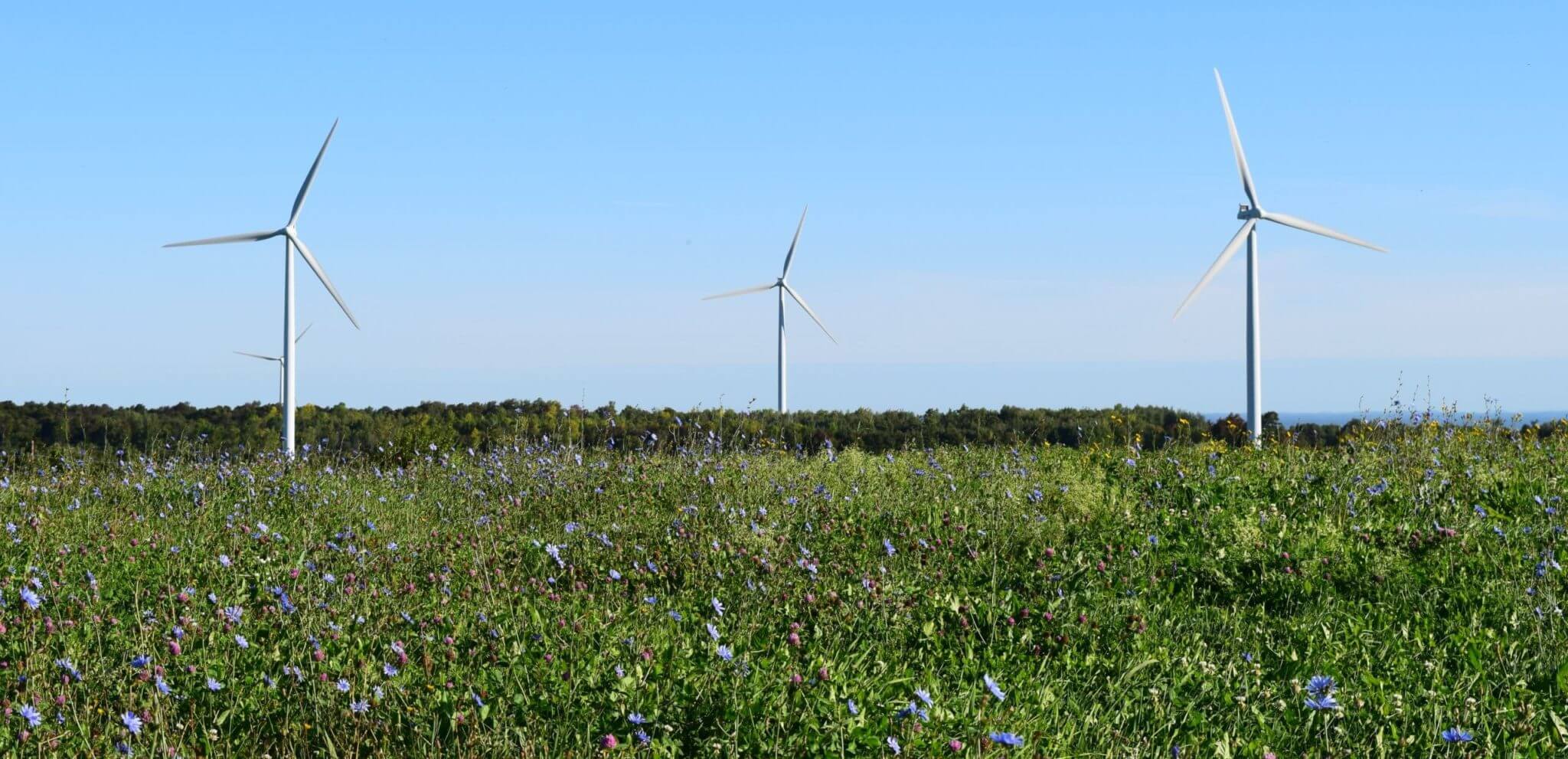#WindPoweredSchools: A wind farm opens doors for upstate New York students
As the son of a longtime public school teacher, I have a good understanding of the budget constraints many schools face. Every year, my mother spent hundreds of dollars out of her own pocket to make sure her students had the supplies they needed. When she became her school’s art teacher, she was always on the lookout for materials the students could repurpose, because there simply wasn’t money in the budget to buy a year’s worth of art supplies for 600-plus kids.
And that’s in the New York City public school system, where funding is more robust than in many other parts of the country. In particular, rural school districts face the significant challenges of small populations and low tax bases.
So as I made my way through wind power communities in New York and Ohio last week, learning about the ways wind energy improves public schools was my most meaningful takeaway.
I was fortunate enough to spend part of an afternoon with Cheryl Steckly, Superintendent of Schools for Lowville, N.Y. The nearby Maple Ridge wind farm is the largest project in New York State, and it’s been a game-changer for Cheryl’s district. Revenue from Maple Ridge has allowed Lowville schools to weather tough times and create better facilities and opportunities for its students.
“We would not have had the resources to have all of those staff onboard, or to have some of the programs we have, absent the revenue we’ve received from the (wind farm), Cheryl told me.
“We are a poor rural school district, 45 percent of our students are either on free or reduced lunch. It’s a very rural district so our families are farmers, they work in logging, they work at one of the mills. And they are hard working, good people, but not a lot of employment opportunities for them here,” Cheryl explained. “People are moving away and heading to areas where there are more educational and employment opportunities. So the challenge of fewer students and then less financial support makes school districts a challenging place to be.”
Today, Maple Ridge has helped change this narrative by bringing new revenue to the school district.
Lowville schools now offer multiple AP and college-level courses, and they’re in the process of providing every student in grades three through 12 with a laptop or tablet. The device will be theirs for the next three years, after which it will be upgraded to a newer model. Lowville’s campus has universal WiFi, and every classroom has a smartboard. It was also able to refurbish its athletic fields, installing new turf, baseball and softball fields and tennis courts.

These resources have made a difference in student performance. Lowville schools rank strongly both in-state and nationally, while Syracuse University is currently studying what’s made Lowville so successful relative to schools from similarly disadvantaged areas.
And with recent declines in state funding, revenue from Maple Ridge helped keep Lowville strong.
“Over the last 10 years state aid has declined and state support for school districts has declined, in terms of finances. With the revenue from the wind (farm) we have been able to navigate those waters much more easily than our neighboring schools have. While other school districts were cutting positions, or at least maintaining, not growing positions, we were able to maintain and grow the number of positions we have,” Cheryl explained.
One of the most surprising things is the revenue from Maple Ridge has allowed Lowville schools to invest in its students at no additional cost to taxpayers.
“I believe our town has always strongly supported our school district. But I think they are also pleased that they can have an outstanding school in their community, that they are very proud of, that’s not costing them additional money to support the programs that they have,” Cheryl said. “Our tax revenue, our tax stabilization, was a priority for our school board, (and) has certainly benefited our local community. Their tax rate is half of what it was (before the wind farm). So they can have exceptional facilities that are open for them to use, strong academic programs for their own children or grandchildren, at no additional cost for them.”
Today, Maple Ridge is part of Lowville’s identity.
“The wind project is certainly a part of our district’s landscape. Our students go to the wind farm for field trips. They study wind and green energy in their classrooms. We have a swim team called ‘The Turbines’ that practices here,” Cheryl said. “It is part of who we are, it is part of what we see as part of our school district.”




